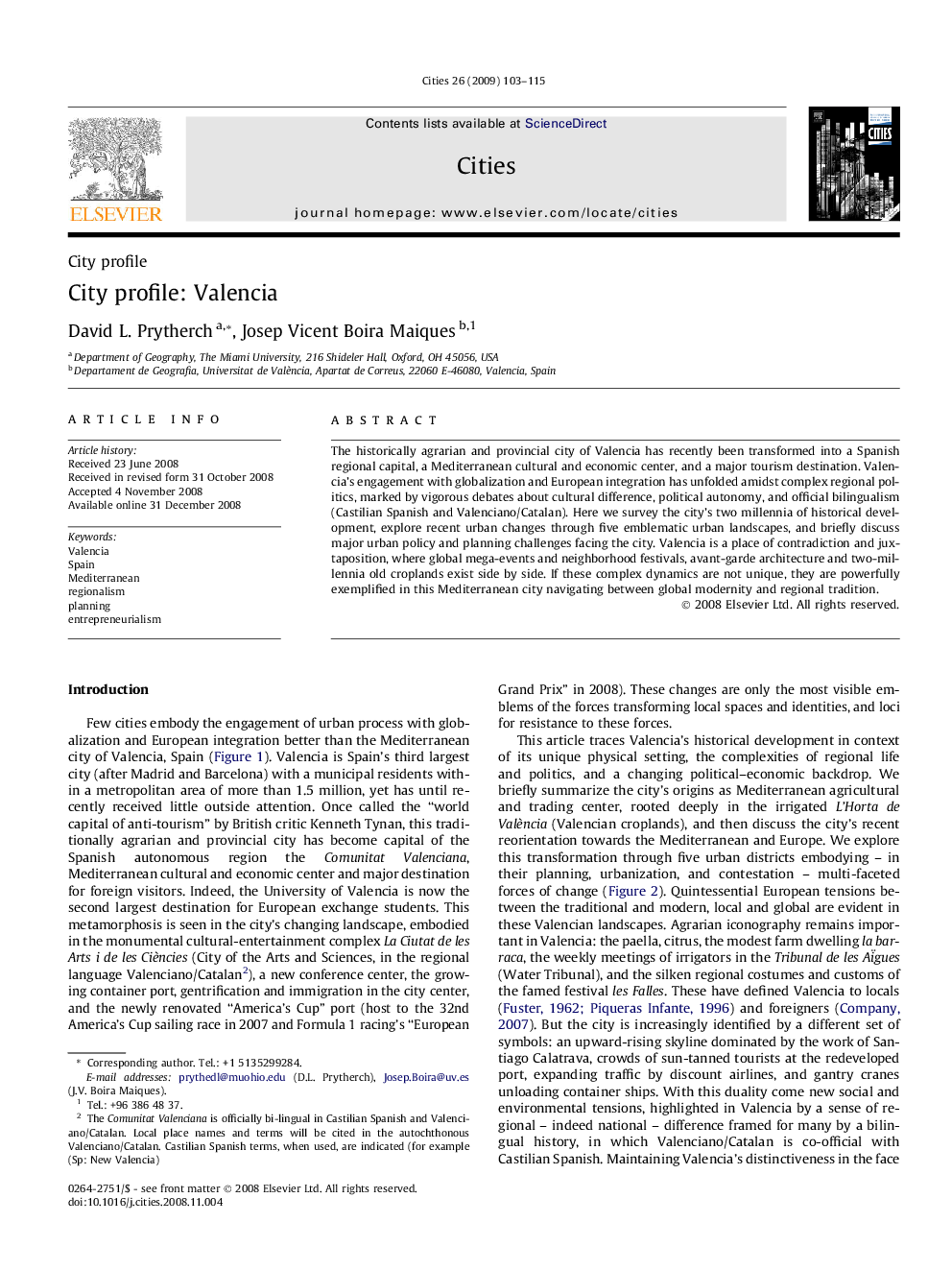| Article ID | Journal | Published Year | Pages | File Type |
|---|---|---|---|---|
| 1008813 | Cities | 2009 | 13 Pages |
The historically agrarian and provincial city of Valencia has recently been transformed into a Spanish regional capital, a Mediterranean cultural and economic center, and a major tourism destination. Valencia’s engagement with globalization and European integration has unfolded amidst complex regional politics, marked by vigorous debates about cultural difference, political autonomy, and official bilingualism (Castilian Spanish and Valenciano/Catalan). Here we survey the city’s two millennia of historical development, explore recent urban changes through five emblematic urban landscapes, and briefly discuss major urban policy and planning challenges facing the city. Valencia is a place of contradiction and juxtaposition, where global mega-events and neighborhood festivals, avant-garde architecture and two-millennia old croplands exist side by side. If these complex dynamics are not unique, they are powerfully exemplified in this Mediterranean city navigating between global modernity and regional tradition.
